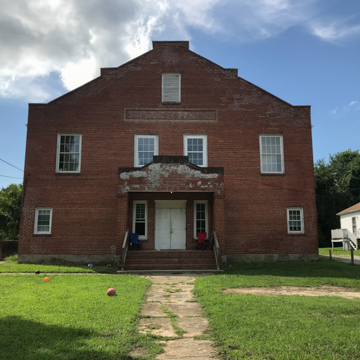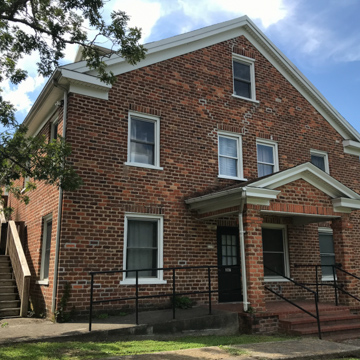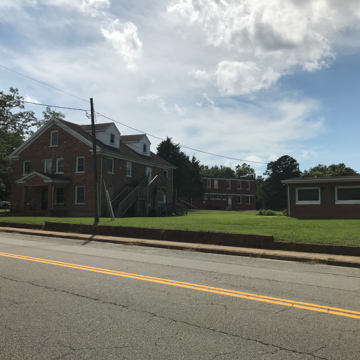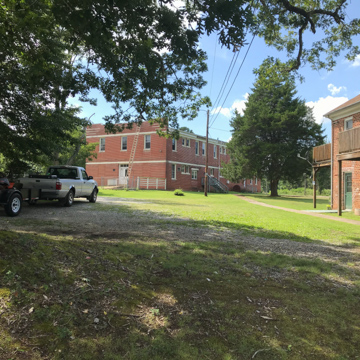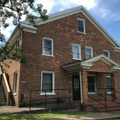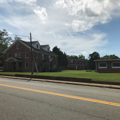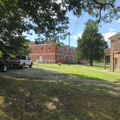After graduating from Hampton Institute and attending Howard University, where he became an ordained minister, the Reverend James Murray Jeffress returned to his native Charlotte County and served as a religious and educational leader. In 1904, he founded the Grand United Order of Moses, one of the country's benevolent insurance companies set up by and for African Americans in the early twentieth century. The Moses Order was a national organization that held three-day annual meetings for delegates and initiates from many states. The order built the large brick Moses Hall as a meeting place for the organization, a six-bay two-story building distinguished by its elbowed parapeted gable ends. Designed to accommodate large assemblies, the hall has an expansive space for dining and receptions on the first floor, an auditorium seating five hundred on the second floor, and sleeping quarters on the third.
A decade or so later, a four-bay two-and-a-half-story brick dormitory (287 Thomas Jefferson) with two gabled dormers was added behind Moses Hall to house visiting delegates. On the right and to the rear of the dormitory is the Moses Nursing Home (1951), a two-story modern brick building that the order planned as a hospital but is now closed. Except for the one-story administration building (between the dormitory and Moses Hall), the entire complex today contains only a few apartments and needs revitalization. However, for much of the twentieth century, especially before racial integration, these buildings served the social and health needs of the national organization's members and the population of the surrounding countryside. Their annual meeting was a spectacular festival featuring parades and carnivals, and such national leaders as Booker T. Washington were speakers. For many years, the complex, a meeting place for the NAACP, voters' leagues, and social events, offered strength and unity to the local population and its national membership.














